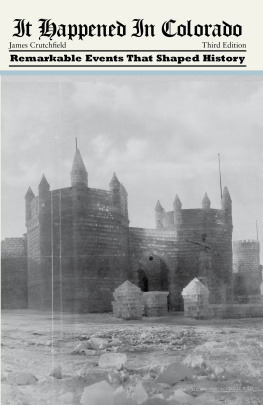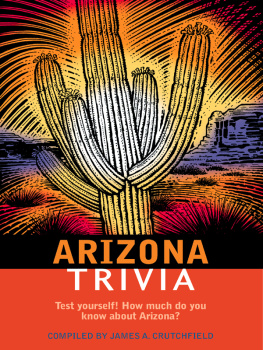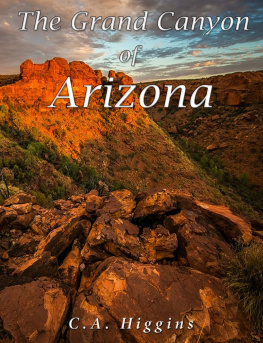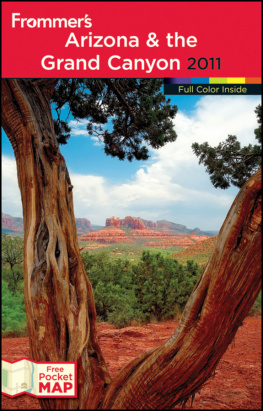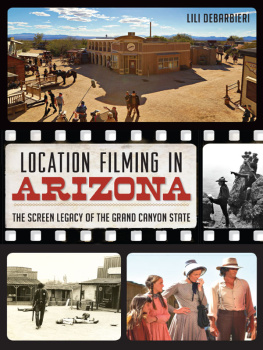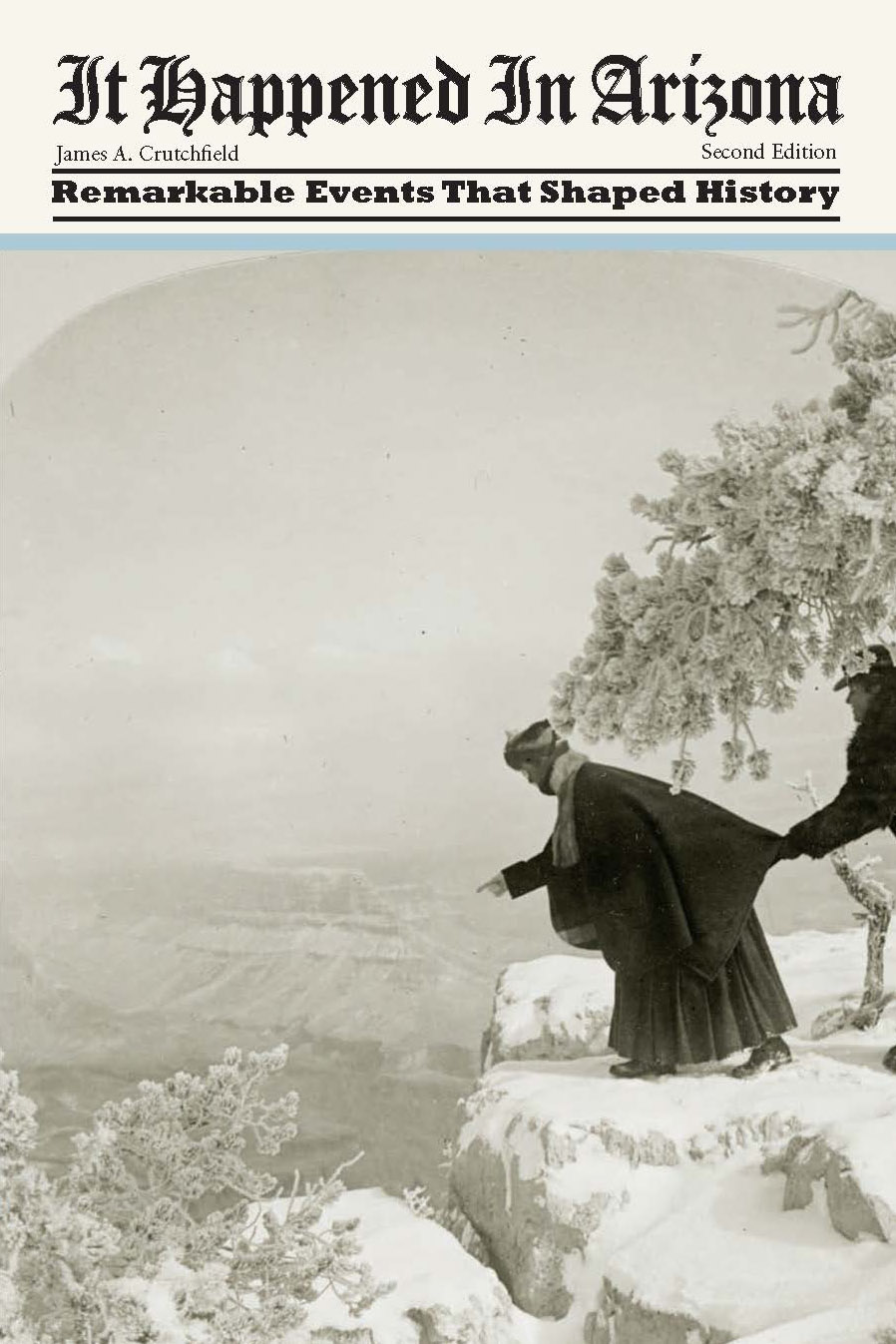Copyright 2010 by Morris Book Publishing, LLC
Previously published by Falcon Press Publishing Co., in 1994
The publisher gratefully acknowledges the assistance of Dr. James D. McBride, Department of History, Arizona State University.
ALL RIGHTS RESERVED. No part of this book may be reproduced or transmitted in any form by any means, electronic or mechanical, including photocopying and recording, or by any information storage and retrieval system, except as may be expressly permitted in writing from the publisher. Requests for permission should be addressed to Globe Pequot Press, Attn: Rights and Permissions Department, P.O. Box 480, Guilford, CT 06437.
Project editor: David Legere
Map: Daniel Lloyd Morris Book Publishing, LLC
Library of Congress Cataloging-in-Publication Data is available on file.
ISBN 978-0-7627-5420-5
Printed in the United States of America
10 9 8 7 6 5 4 3 2 1
To the Memory of Wallace E. Clayton: writer, editor, friend
PREFACE
This book highlights some of the most fascinating episodes of Arizona history, from the days of the prehistoric Indians through modern times. Each story is complete in itself and can be read individually and out of sequence.
Arizona is an extremely important state historically, and although this book does not purport to be a thorough history of the Grand Canyon State, these vignettes have been chosen selectively to give the reader a broad and varied peek at Arizonas colorful past.
I hope that It Happened in Arizona will provide a few hours of pleasure to those who read it, and that it will, perhaps, find its way into the classrooms of the state, thereby giving younger generations a better appreciation of their vast heritage.
THE FIRST IRRIGATION EXPERIMENTS
A.D. 1200
It was clear to every member of the labor detail that they had done a good days work. As the late summer sun hovered above the western horizon far across the desert, the men looked at one another and nodded their heads in approval. Then they prepared for the long trek back to the village several miles away.
Picking up their stone-tipped hoes and adzes, the workers headed east. They were weary. They had followed the same routine every day for several weeksrising at dawns first light, eating a sparse meal of dried beans and corn, picking up their primitive tools, and hiking from the village to the excavation site a few miles away. And the backbreaking work would continue for several months, since the irrigation canals the men were digging were far from complete.
Indeed, the leader of this particular work party estimated that several thousand more yards of canal, up to thirty feet wide and seven feet deep, had to be built this season. Then, when the new canals were linked with an existing system of ditches, new fields could be opened for the growing of beans, corn, squash, and cotton.
These canal diggers are known today as the Hohokam, and they occupied what is now south-central Arizona, near the confluence of the Salt and Gila Rivers. Historians are not certain of the Hohokams origin. They may have been descendants of other Indian groups who had lived in the region since it was first populated about 11,000 years ago, or they may have migrated to the region from central Mexico. Whatever their origins, they appeared as a distinct culture about 300 B.C. and became the first people in the New World to cultivate crops through irrigation.
But by A.D. 1450, after centuries as one of the dominant cultures of the Southwest, they mysteriously vanished. It was the Pima Indians, who occupied the area later, who gave them their name. Hohokam is a Pima word meaning all used up, or those who have gone.
The Hohokam people were also the first in the New World to irrigate their crops. To plan miles of irrigation ditches and organize workforces of sufficient size and discipline to tackle such a monumental task, the Hohokam must not only have been socially organized, but technologically advanced as well.
An Australian archaeologist, V. Gordon Childe, in his book What Happened in History, alluded to the sophistication of a population that develops irrigation as a farming aid.
The digging and maintenance of irrigation channels are social tasks even more than the construction of defensive ramparts or the laying out of streets. The community as a whole must apportion to individual users the water thus canalized by collective effort.
But it was not only in canal construction that the Hohokam people excelled. In later years, the culture was noted for its beautiful pottery and shell etchings, and expansive agricultural practices. Lieutenant Colonel William H. Emory, traveling with the Army of the West during the Mexican War, commented on the progressive farming techniques of the Pima Indians, whose culture succeeded that of the Hohokam. No doubt the description would hold basically true for the Pimas predecessors as well.
We were at once impressed with the beauty, order, and disposition of the arrangements for irrigating and draining the land. Corn, wheat, and cotton are the crops of this peaceful and intelligent race of people. All the crops have been gathered in, and the stubbles show that they have been luxuriant. The cotton has been picked, and stacked for drying on the tops of sheds. The fields are sub-divided, by ridges of earth, into rectangles of about 200 X 100 feet for the convenience of irrigating.
Captain A. R. Johnston, who accompanied Emory, was equally impressed with some of the ancient buildings left behind by the Hohokam people. Commenting on the complex that is today part of Casa Grande Ruins National Monument, Johnston wrote:
We saw to our left the Casa de Montezuma. I rode to it, and found the remains of the walls of four buildings, and the piles of earth showing where many others had been. One of the buildings was still quite complete, as a ruin. The others had all crumbled but a few pieces of low, broken wall. The large casa was 50 feet by 40, and had been four stories high, but the floors and roof had long since been burnt out. There were four entrancesnorth, south, east, and west; the doors about four feet by two; the rooms as below and had the same arrangement on each story; there was no sign of a fireplace in the building. The walls were four feet thick at the bottom, and had a curved inclination inwards to the top. The walls had been smoothed outside, and plastered inside, and the surface still remained firm.
The Hohokam culture was undoubtedly one of the most progressive in the Southwest. Along with their neighbors, the Ancestral Puebloan, Mogollon, Sinagua, and Salado, the Hohokam people transformed a vast, arid wasteland into a hospitable haven.
AN EARLY VIEW OF THE GRAND CANYON
1540
It was late August 1540, and the noted Spanish captain-general, Francisco Vasquez de Coronado, with several of his lieutenants and some friendly Indian scouts, crouched over a map crudely drawn in the parched sand of the Southwestern desert. Coronados eyes shifted from the Indians to his interpreter, who translated their incomprehensible words into pure, rhythmic Castilian Spanish.
Coronado and his command had arrived here in Cibola (near what is now the ArizonaNew Mexico border) several days earlier, in search of the famous seven cities of gold that Fray Marcos had eagerly reported to exist in this region. Coronado had set forth from Compostela, Mexico, on February 23, along with 336 soldiers and about 700 Indians, herdsmen, wranglers, and other camp followers. Together they comprised the most brilliant company ever assembled in the Indies to go in search of new lands, according to one chronicler of the time.


